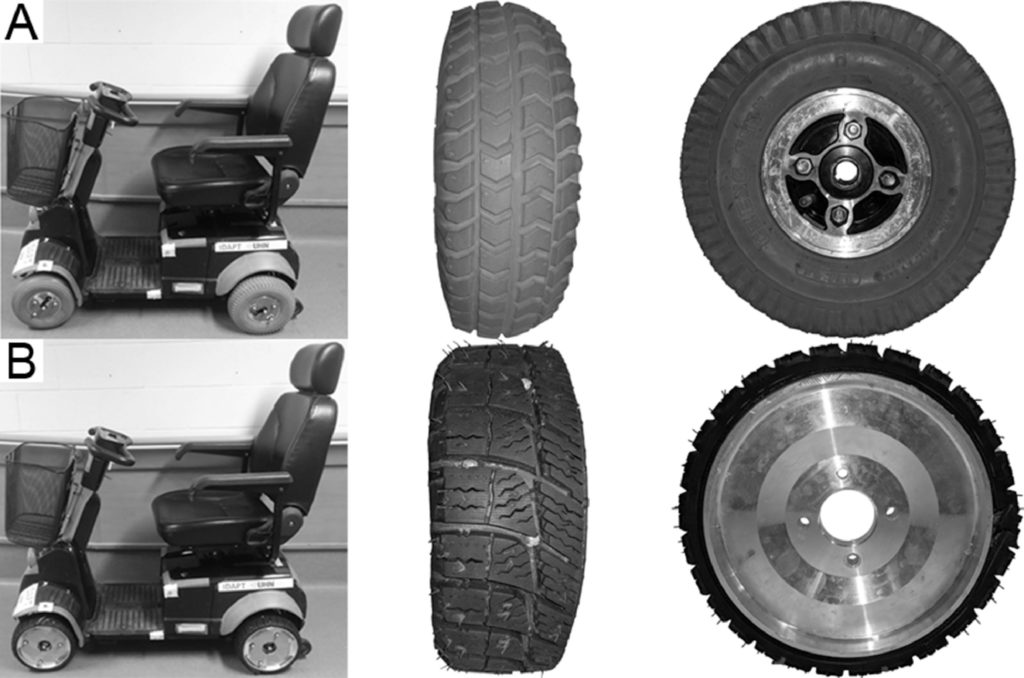Over 100,000 Canadians use mobility scooters to get around, but when it comes to Canadian winters, these assistive devices don’t make the cut. By testing eight scooter models in common winter conditions, a team of researchers from the University Health Network has revealed the barriers scooter users face. Their work highlights what needs to be done to keep these devices functioning on Canadian streets year round.
The study was led by Roger Montgomery, a research analyst at the Toronto Rehabilitation Institute, and published in the Archives of Physical Medicine and Rehabilitation.
Winter conditions make public spaces inaccessible
While many Canadian provinces have been pushing for increased accessibility in recent years, most aren’t on track to meet their accessibility targets. This is particularly problematic during the winter, when already inaccessible spaces become even harder to navigate.
“Snow removal services do not always adequately clear ramps and sidewalks,” explained Montgomery in a press release. “Moreover, curb and accessibility ramps do not always comply with guidelines.”
To determine just how much of a barrier this can be, Montgomery and colleagues put eight commercially available mobility scooter brands to the test. They tested each scooter on three conditions — dry concrete, bare ice, or 2.5-cm-deep snow — with slopes of up to 10 degrees in each case.
“We tested performance in normal conditions on dry concrete, as well as on snow- and ice-covered surfaces,” explained Geoffrey Fernie, a KITE Senior Scientist at the Toronto Rehabilitation Institute and senior author of the study. “Specifically, we looked at the scooters’ steerability […] and slip resistance when driving forward and backward on slopes.”
In general, the eight scooters tested were able to navigate the dry concrete surfaces. But when it came to steering the scooters around snow- or ice-covered corners, two-thirds of the devices failed.
The team also found that snow and ice greatly reduced the scooters’ ability to ascend or descend slopes. Only half of the scooters tested could ascend a gentle (4.8-degree) slope without losing traction, and only one could ascend a slope that was covered in ice.
These findings are particularly worrisome, because slopes of up to 4.8 degrees comply with both the Americans with Disabilities Act and the National Building Code of Canada. This means that while ramps and sidewalk curbs present on every street corner may be considered accessible, they cannot be navigated by the majority of mobility scooter users in winter conditions.
Winter tires can help — but they need to gain traction
The team went on to test whether winter tires could be used to help the scooters gain some traction.
Using tread designs from a common brand of winter tires for cars, the researchers created custom-sized winter tires for two of the scooters in their study. The grooves in these treads are designed to move snow and water out of the way, allowing for a better grip on the ground. Regular tires, on the other hand, tend to melt snow and create slippery surfaces as they push into it.

In both cases, the team found that the winter tires allowed the scooters to navigate slopes of up to 5.7 degrees. While these results may sound promising, however, the unfortunate reality is that winter tires are not widely manufactured or readily available for mobility scooters.
The findings of this study highlight a gap in our public spaces that needs to be addressed if we want to make Canada accessible. Unshovelled, icy sidewalks are particularly problematic for seniors and disabled Canadians, and can lead to unsafe conditions for everyone.
“We need to improve safety for those facing mobility challenges,” Montgomery concluded.
“To meet the needs of scooter users year round, manufacturers need to consider winter environments when they design and test their devices, and make winter tires widely available.”








































